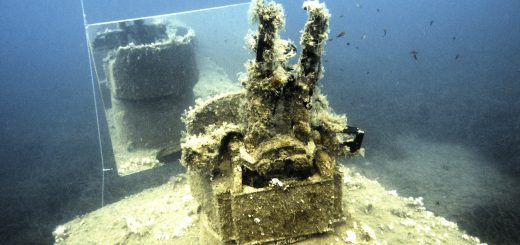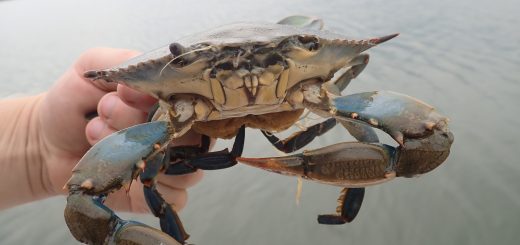Brown trout use restored stream habitat during winter
Due to degraded habitat and poor water quality throughout North America, stream restoration projects are becoming increasingly widespread. These projects frequently focus on restoring riparian and stream habitat, stabilizing streambanks to reduce erosion, and restoring populations of popular sportfish such as trout. Many restoration projects are designed to incorporate both the natural features of the stream and artificially placed structures. In many trout streams, restoration efforts are designed for summer habitat use, but little is known about their efficacy during winter.
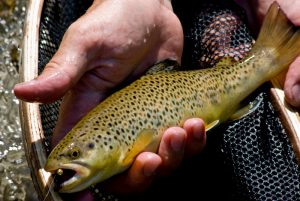
Figure 1. Brown trout. Source: Wikimedia Commons.
Brown trout (Salmo trutta) are the most common species of trout in southeastern Minnesota (Figure 1). Despite extensive habitat rehabilitation efforts, trophy-sized brown trout are not common in southeastern Minnesota streams. Dr. Doug Dieterman, Bill Thorn and Dr. Charles Anderson from the Minnesota Department of Natural Resources examined if stream restoration projects created suitable winter habitat for brown trout. To test if large brown trout were using restored habitats during winter, the researchers chose seven streams in southeastern Minnesota that characterized the diversity of trout stream conditions found in the region (Figure 2). Four of the streams contained artificial habitat structures such as large logs and rocks in the stream, rip-rap along the streambank, overhead bank cover, deepened pools and narrowed stream channels. Two streams did not contain artificial structures from stream restoration projects. The final stream, Cedar Valley Creek, was mostly natural with occasional sections of rip-rap along private property and a highway to reduce erosion.
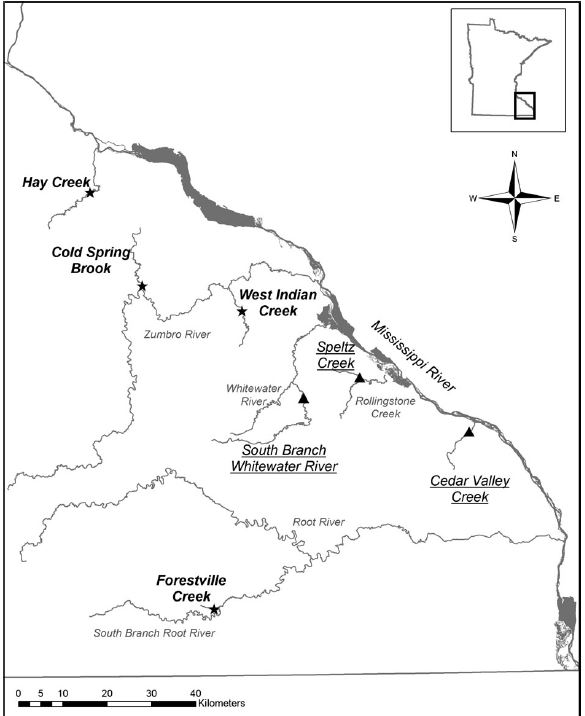
Figure 2. Locations of the seven study streams in southeastern Minnesota. The streams with names in the bold text with stars are rehabilitated streams and the streams with underlined names and triangles are natural streams (from Dieterman et al. 2018).
The researchers captured at least 10 adult brown trout (>330 millimeters in length) from each stream and surgically implanted them with radio transmitters (Figure 3). Each transmitter had a range of about 400 meters. The researchers tracked the fish and recorded habitat use once every three weeks using a four element Yagi antenna with a programmable scanning receiver. Data were collected over the course of three winters from the end of the brown trout spawning season (late November to early December) until mid March. They measured habitat features including pool area, pool depth, and total area of cover (overhead banks, rip-rap, instream rock, instream vegetation and large wood). Other important variables measured included water depth, water velocity, predominant substrate, and cover.
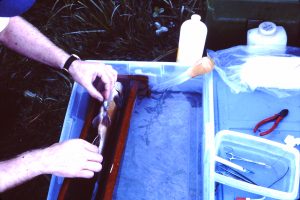
Figure 3. Surgical implantation of a radio transmitter in a brown trout. Photo by Dr. Doug Dieterman.
Brown trout showed similar habitat selection in streams with natural habitats and streams with artificial habitat rehabilitation. In natural streams, trout preferred deep pools and areas with natural woody material. In rehabilitated streams, trout preferred similar water depths and areas with artificially placed logs. In both natural and rehabilitated streams, the trout avoided shallow pools and areas with little to no cover. The trout in both types of streams were also found to avoid areas with instream vegetation (likely due to the large size of the trout), surface ice along the streambanks, and fast currents (>20 cm/s).
This study showed that the stream restoration projects successfully produced habitat for large brown trout to use during winter. The restoration efforts replicated features found in natural streams, as well as created artificial cover that were used by trout. Large wood and deep pools (60-120 cm in depth) are important features that should be incorporated into habitat rehabilitation projects for wintering brown trout.
Reference:
Dieterman, D.J., W.C. Thorn, and C.S. Anderson. 2018. Winter habitat selection by large brown trout in streams with and without habitat rehabilitation. North American Journal of Fisheries Management 38: 253-266.


